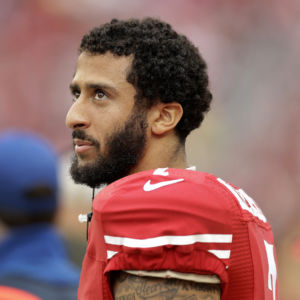A month after the presidential election, we examined what has been termed “The Messy Truth.”
That’s the name of the talk show special/town hall meeting that recently was televised on CNN and was hosted by noted liberal commentator Van Jones, who explored the deep divide between the nation’s red and blue factions and why the chasm exists.
Jones also discussed the Big Switch.
During the show, he interviewed the Seitz family from Ohio, a case study that encapsulated the core message of “The Messy Truth.” Scott Seitz, the patriarch of the family, which is white, voted for Barack Obama in 2008 and 2012. However, in 2016, he switched.
Seitz explained why to Jones: “We truly want to make America better. And you have enlightened us, as well. We hope that the bleeding can actually stop in our area. The Rust Belt area is filled with United Auto Workers, United Steelworkers and everything trickles down from that. And when they seem to suffer, the rest of us suffer. And we need to stop the bleeding.”
They sought change; that meant Donald Trump. It also meant ruling out Hillary Clinton, whom they felt didn’t address their concerns, needs or wants.
Obama won Ohio in 2008 and 2012; Trump won on Nov. 8, garnering the state’s 18 electoral votes. That’s most significant.
In fact, as Jones’ show noted, the election apparently turned on three states — Michigan, Pennsylvania and Wisconsin. And approximately 80,000 votes. That’s all.
Philip Bump, a New York-based political writer for The Washington Post, micro-analyzed the Big Three this way: “… Michigan, Pennsylvania and Wisconsin. Trump won those states by 0.2, 0.7 and 0.8 percentage points, respectively — and by 10,704, (and) 46,765 and 22,177 votes. Those three wins gave him 46 electoral votes; if Clinton had done one point better in each state, she’d have won the electoral vote, too.”
That means Clinton would have won 278 electoral votes, enough to surpass the required 270 threshold to claim the White House. Instead, she finished with 232 to Trump’s 306.
However, in 2012, Obama won Michigan, Pennsylvania and Wisconsin. What happened?
Karen Wood, a 52-year-old manager of a water-purification company in Michigan, made it plain. She told InsideSources.com: “I take personal offense to the opinion that people who voted for Trump are rural American racists or xenophobes. I am an educated, white, urban woman, and I voted for Trump. I did so because this election revealed the depths of corruption in our current government system and I, for one, am sick of it. Trump owes no favors to big banks or corporate donors, unlike Hillary.
“Trump came off at first to me as an egomaniac, but later convinced me that he truly cares about the people of this country and bringing jobs and prosperity back to this country. His ideas of making countries pay for our help and security is completely appropriate. He is committed to bringing down our debt, and for these reasons I voted for him. (Plus, I despise Hillary).”
With that, many Trump voters took him seriously, and not necessarily literally, meaning they detached themselves from his campaign histrionics and antics.
CNN’s Jones famously — or infamously, to some — classified Trump’s shocking victory as a “white-lash,” passionately saying his presidential win was a sign that many white Americans feared the changing demographics (called the “browning of America”) of the United States and that Trump’s Electoral College victory was a staunch repudiation of the first black president, meaning all things Obama.
But the events of the last two years are much more in depth. For starters, the Democrats made a huge mistake in assuming that the states, especially the so-called Blue Wall in the Midwest and Northeast, which voted for Obama in 2012, automatically would embrace Hillary in 2016. Notice how quickly that blue turned to red on the electoral map. That Blue Wall crumbled.
Clinton obviously didn’t connect with many rural and/or small-town and/or working-class (non-college) white voters. Plus, those in the South (remember North Carolina and Florida).
Thus, instead of genuflecting to Jay Z and Beyonce on the dais, perhaps Hillary would have been better served trying to woo Garth Brooks and Trisha Yearwood. For those who don’t understand that analogy, simply check the country-music charts. (And those new Amazon Echo commercials with Alexa.)
President Obama empowered black folk in the United States, whether in reality or through symbolism. Gave many a sense of belonging, a stake in the United States, skin in the game. We often heard Obama — as well as Hillary — reference Black Lives Matter as a noble group with a worthy cause. Ironically, the presence of BLM most assuredly helped Trump get elected.
Unwittingly, of course.
You have to figure that many citizens, especially the anti-Hillary contingent, have grown tired of mass demonstrations night and day, protests blocking traffic at rush hour, and ugly confrontations with police. Those citizens undoubtedly figured a vote for Trump was a vote against perceived anarchy and a vote for law and order, meaning respect for authority.
Add NFL player Colin Kaepernick and his defiant national anthem kneel-downs to the mix, clashing with the Republican version of patriotism and a love of country, meant we saw the blue-and-red divide expand even further.
In hindsight, those elements also clearly aided the Big Switch. And that is truly “The Messy Truth.”

